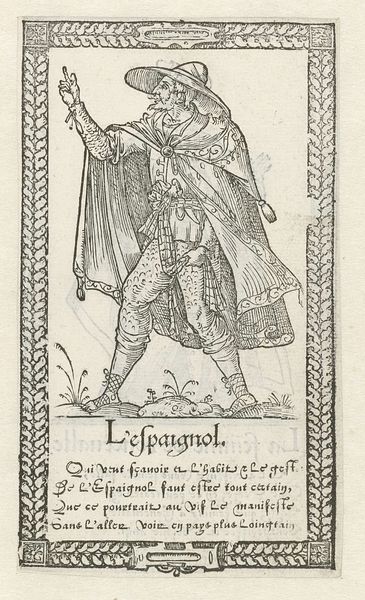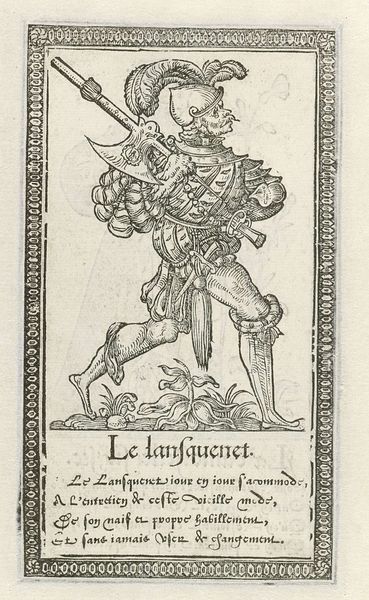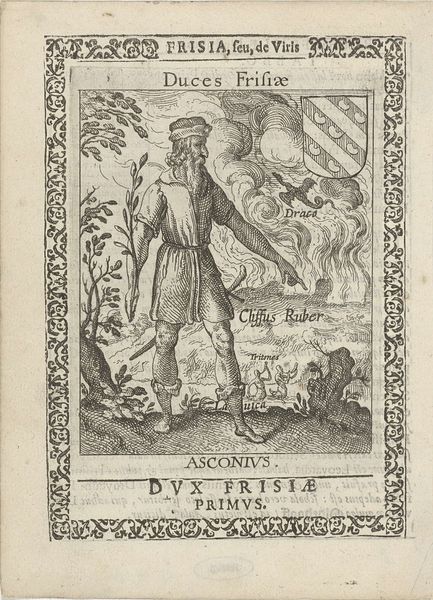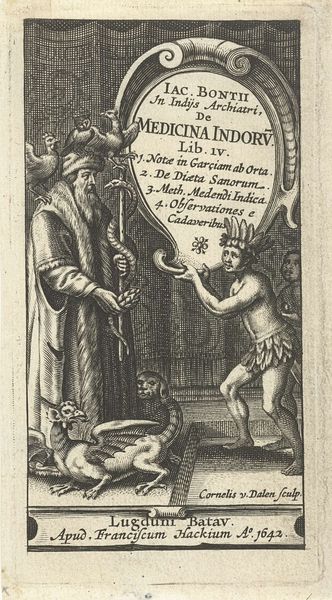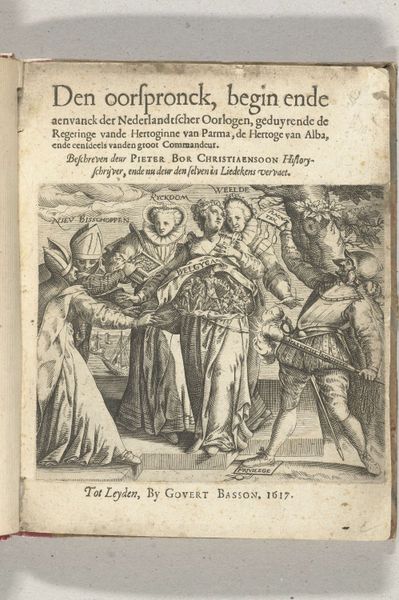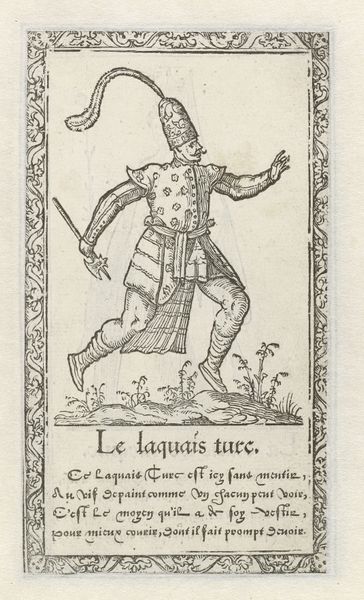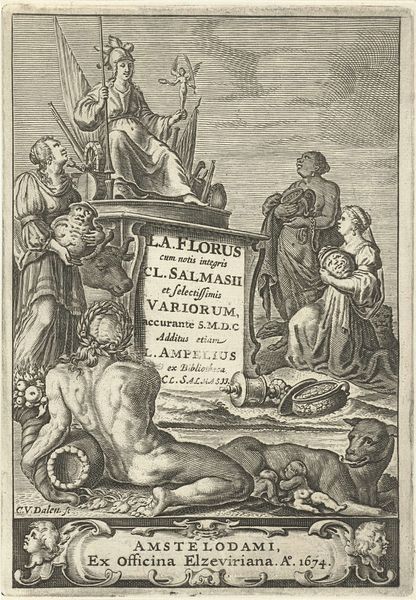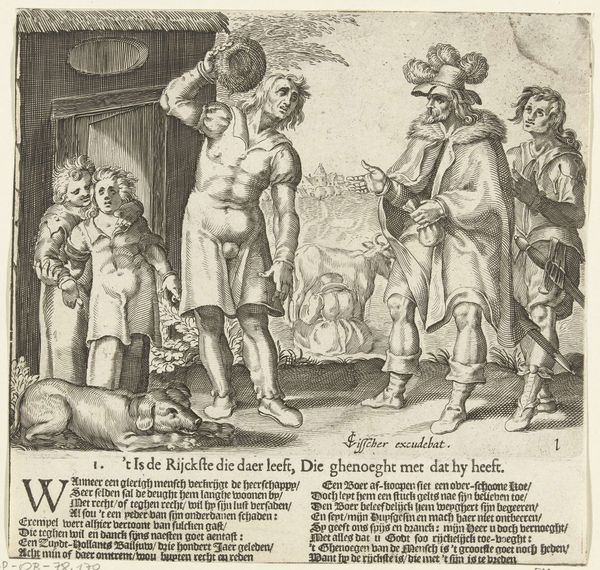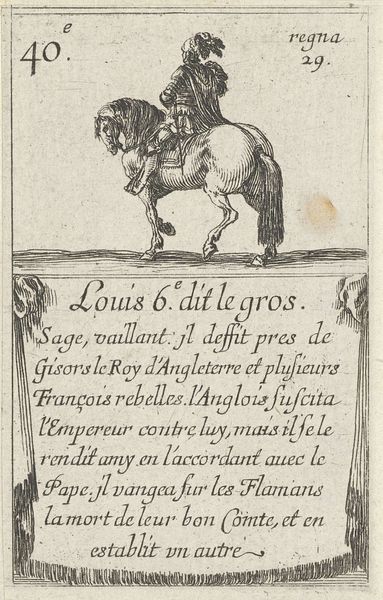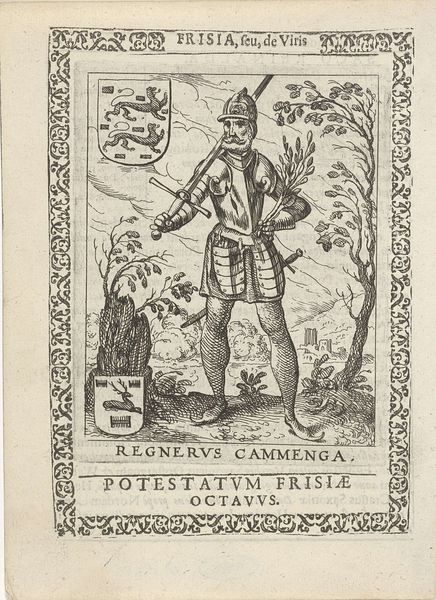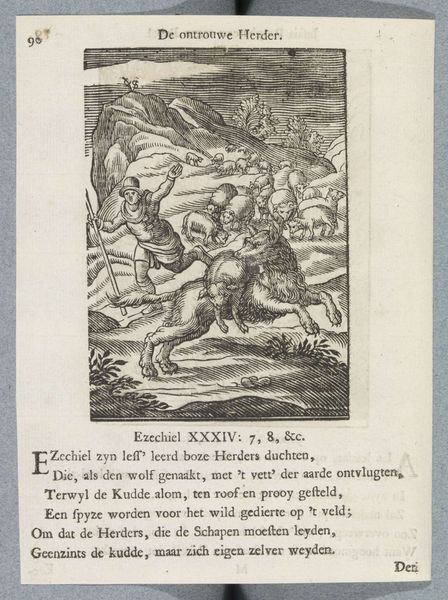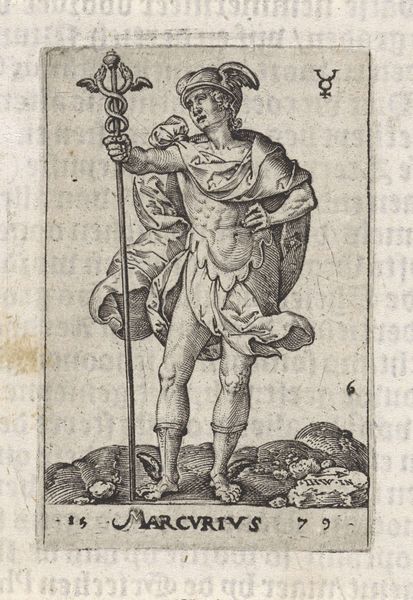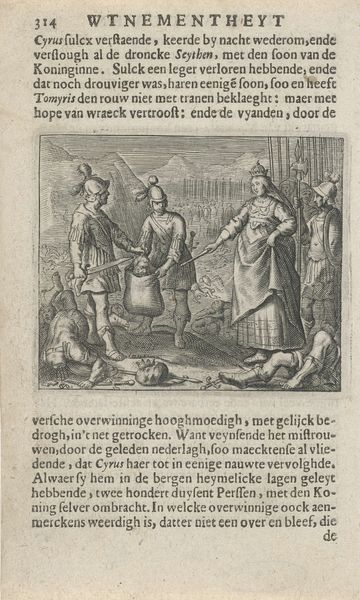
print, engraving
#
baroque
# print
#
landscape
#
figuration
#
engraving
Dimensions: height 107 mm, width 63 mm
Copyright: Rijks Museum: Open Domain
Editor: So, here we have Cornelis Claesz. Duysend's engraving, "Drie mannen buigen voor Apollo" from 1640, currently at the Rijksmuseum. It strikes me as quite theatrical, almost staged, and with a fascinating mix of classical imagery and contemporary figures. What's your take? How do you interpret this work, particularly within its historical context? Curator: It’s a compelling image, isn’t it? Consider that prints like these circulated widely, acting as visual arguments and shaping public opinion. The classical figures are not simply decorative, but vehicles for conveying contemporary political messages. Do you recognize the inscription below the image? Editor: I can make out “Lapis Lydius Politicus,” which I believe translates to "The Political Touchstone". Curator: Precisely! That title provides a clue. The "touchstone" was a stone used to test the purity of gold. Here, it signifies discerning truth in politics. Notice how the men, dressed in contemporary Dutch attire, bow before Apollo, the god of reason and the arts. What could that gesture imply about the political climate? Editor: Perhaps it's suggesting a need for wisdom and enlightenment in governance? Are these men politicians or public figures seeking Apollo’s guidance? Curator: It's highly probable. During the Dutch Golden Age, debates about governance and civic virtue were common. Images like this could serve as veiled critiques or endorsements of certain policies or figures. The Pegasus, a symbol of inspiration, adds another layer. The image is suggesting that clear, unbiased thought is critical. It would be interesting to know the background of the client and the role the work served. Editor: That's fascinating. I hadn't considered the print's role as a form of political commentary. The work as such gets additional relevance as we observe from our present context. Curator: Exactly! By analyzing the image within its social and political context, we gain insight into the public role of art and the way imagery could be deployed to shape thought. I’ve learned as well as enjoyed the discussion about Apollo, politics and art in 17th-century Dutch Golden Age.
Comments
No comments
Be the first to comment and join the conversation on the ultimate creative platform.
